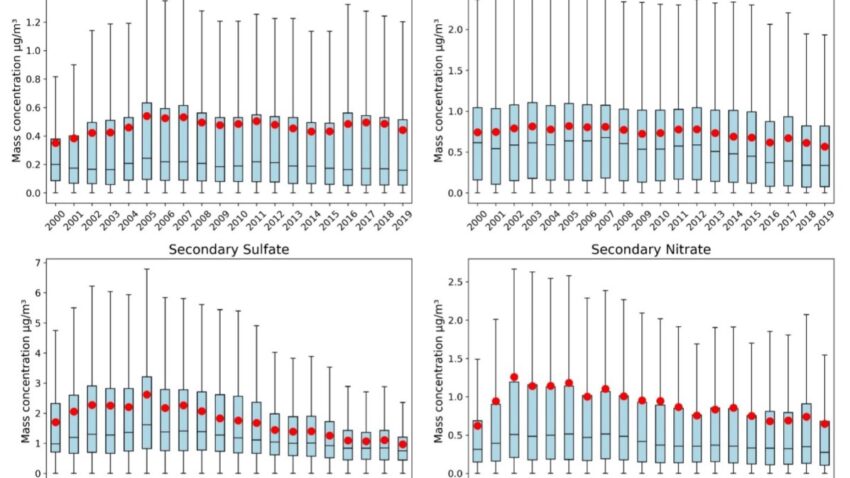Qiao Zhu, Yang Liu, and Sina Hasheminassab. Long-Term Source Apportionment of PM2. 5 across the contiguous United States (2000-2019) Using a Multilinear Engine Model. Journal of Hazardous Materials (2024): 134550.
Read Online at https://www.sciencedirect.com/science/article/pii/S0304389424011294
Identifying PM2.5 sources is crucial for effective air quality management and public health. This research used the Multilinear Engine (ME-2) model to analyze PM2.5 from 515 EPA Chemical Speciation Network (CSN) and Interagency Monitoring of Protected Visual Environments (IMPROVE) sites across the U.S. from 2000 to 2019. The U.S. was divided into nine regions for detailed analysis. A total of seven source types (tracers) were resolved across the country: (1) Soil/Dust (Si, Al, Ca and Fe); (2) Vehicle emissions (EC, OC, Cu and Zn); (3) Biomass/wood burning (K); (4) Heavy oil/coal combustion (Ni, V, Cl and As); (5) Secondary sulfate (SO42-); (6) Secondary nitrate (NO3-) and (7) Sea salt (Mg, Na, Cl and SO42-). Furthermore, we extracted and calculated secondary organic aerosols (SOA) based on the secondary sulfate and nitrate factors. Notably, significant reductions in secondary sulfate, nitrate, and heavy oil/coal combustion emissions reflect recent cuts in fossil-fueled power sector emissions. A decline in SOA suggests effective mitigation of their formation conditions or precursors. Despite these improvements, vehicle emissions and biomass burning show no significant decrease, highlighting the need for focused control on these persistent pollution sources for future air quality management.

